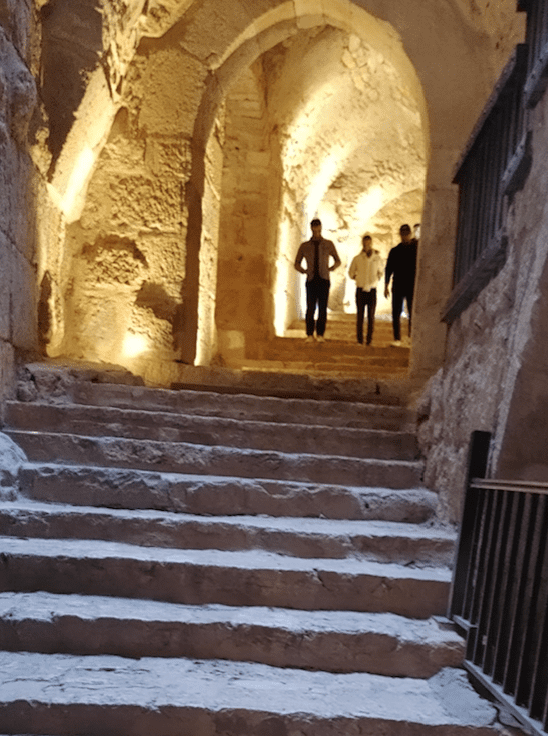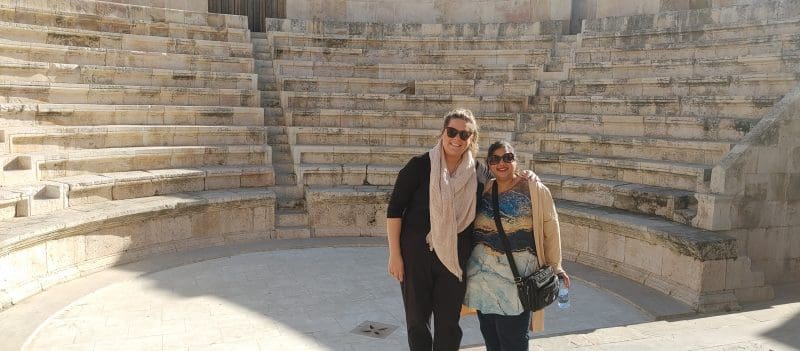The shows must go on in Amman
IAN STALKER
It’s showtime… in a remarkably enduring setting.
The Jordanian capital of Amman is home to a Roman theatre dating back to a time long ago when Roman Legions marched across the country and left many still-standing reminders of their long presence in it.
And, says local tour guide Michael Safar, the Amman theatre is still being put to good use, long after the Roman Empire collapsed.
“The acoustics are still working,” says Safar, who reports that the likes of poets and singers still use the dramatic structure for performances, although those current performers take advantage of modern technology by using microphones.

The theatre — built against a hill and designed in a manner that spectators wouldn’t be facing into the sun — is capable of seating some 6,000 people, with Safar stating that as a rule of thumb the number of seats in a Roman theatre would amount to about 10% of the surrounding city’s population.
The knowledgeable Safar says theatres that featured gladiators doing battle tended to have higher first row seats, a way of preventing combatants who believed they would soon die from leaping into the audiences and trying to kill onlookers as a way of avenging their own impending deaths. “People enjoyed the suffering of those poor gladiators,” Safar notes.
The theatre is only one side to Amman’s historic side, with a nearby hilltop site known as the Citadel having further Roman ruins, including columns that were part of a structure called the Temple of Hercules.

A skillfully carved hand that archeologists suggest was part of a statue of Hercules is believed to have been13 meters in height, a calculation based on the hand’s size.
Amman’s Roman ruins tend to be overshadowed by those in nearby Jerash but Safar states that the Citadel “it’s still an interesting site. It’s a great idea to visit both.”
Safar notes that Jordan’s lengthy past well predates the arrival of the Romans, with a Citadel museum being home to bones from prehistoric animals and reminders of the Neolithic era having been found where Amman now stands.
Meanwhile, Safar notes that historic structures are found throughout Jordan, citing the likes of northwestern Jordan’s Aljoun Castle, built by one of the generals of famed Islamic leader Saladin in 1184 AD. The hilltop castle dominated the three main routes leading to the Jordan valley and protected trade routes between Jordan and Syria, becoming an important defensive bulwark against the Crusaders, who unsuccessfully spent decades trying to capture it.

Safar notes that armored soldiers scaling the hill would likely be tired upon reaching the castle, lessening the likelihood of them being able to breach its defenses.
Aljoun Castle is open to the public, who can wander along passages flanked by thick stone walls and see structural design that could enable castle defenders to safely drop boiling oil on opposing soldiers trying to storm it.
Safar adds that those who inhabited the castle would often use homing pigeons to communicate with far-away colleagues and even recounted how they once used those same birds to ship fresh cherries to a prominent Egyptian eager to enjoy some of that fruit, prompting one visiting Goway Travel staffer to jokingly label the avian deliveries an ancient DHL-like service.
Safar works with Amman-based Karma House Travel & Tours, which in turn is used by Goway Travel for its Jordan program.

















